NOTE: This is part of a serialized narrative of a 2015 Japanese vacation. Please see below for links to previous postings.
Sensoji is an ancient Buddhist temple located in Asakusa district of Tokyo. It is Tokyo’s oldest temple completed in 645 and one of its most significant. It is often used as the site for special seasonal events and serves as the headquarters of the Sho-Kannon sect.
The Senso-ji (Asakusa Kannon Buddhist Temple) appeared shortly after we entered the grounds from the bus parking area.

This is a side view of the entrance to the temple.
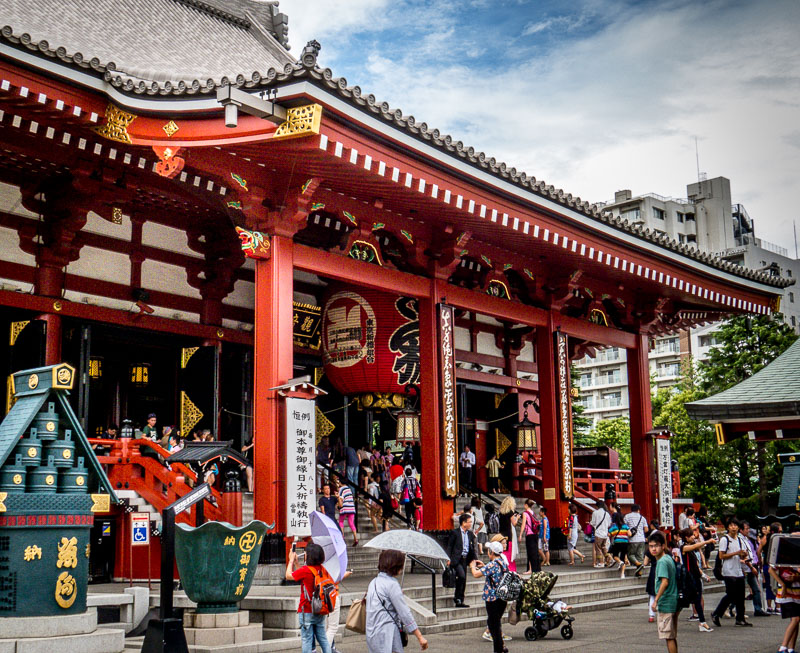
Along the way, we passed a Zen garden with a statue of Buddha

A Five-story pagoda tower (Goju-No-To) which, among other things, houses the relics of the Buddha on the top floor is situated near the temple.
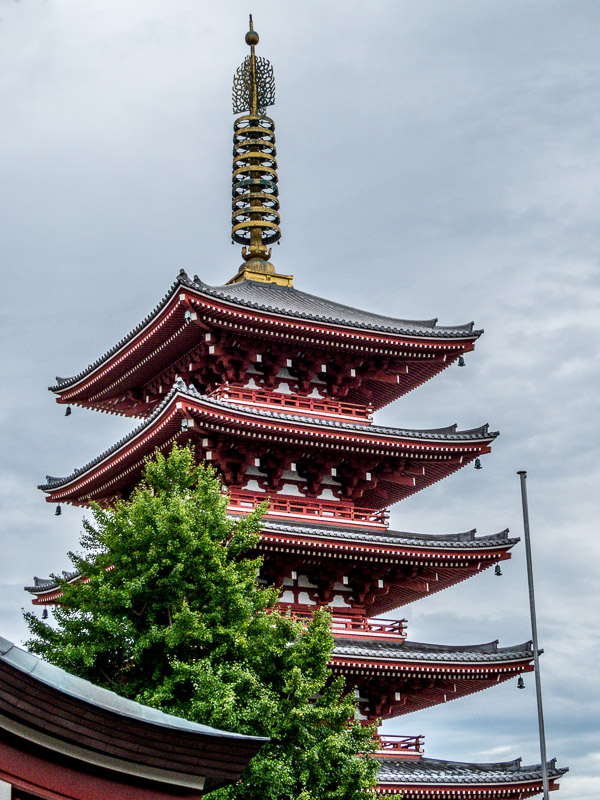
This is a close up view of the massive red chochin (paper lantern) hanging inside one of the gates.

The swastika is an ancient symbol used in many areas of the world. Ironically, it refers to a sense of well-being in sanskrit. In Buddhism it symbolizes good fortune. You can read more about the various religious connotations behind the swastika at ReligionFacts.
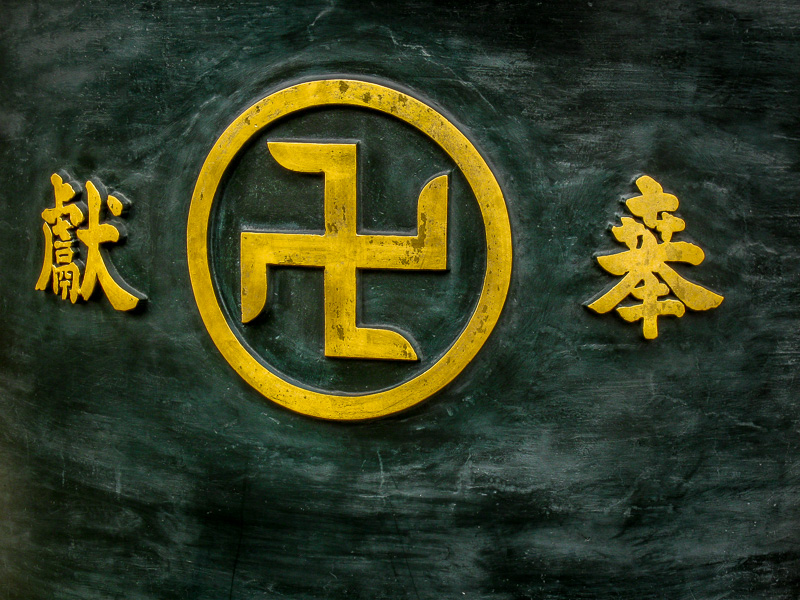
An incense burner is maintained outside the shrine. Bathing in the smoke is reputed to ward off illness and is often done before entering the temple grounds for prayers.

An altar area is reserved for prayer and is cordoned off from general public attendance.

The ceilings inside the temple were painted with beautiful artwork. Visitors have to look up, down and all around to appreciate the entire experience.
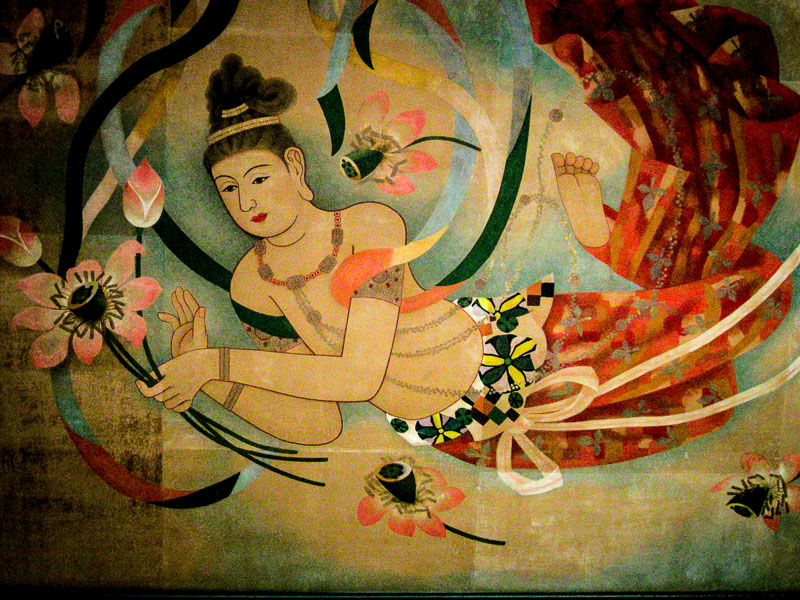
Inside the temple, there is a fortune telling ritual for those who wish to indulge. In the photo below, our guide) describes the process.

Here is a quote about omikuji (paper) fortunes from the Scenes from Nadine website:
“If you get a good fortune, you should bring it home and put it under your pillow when you sleep. Also, you can’t look too triumphant because boasting about it is bad luck. Apparently, how you react to your fortune matters! You must keep a poker face, regardless of your fate.
So what if you get a bad fortune? Maintain a straight face and leave it behind! It is believed that you should leave your bad fortune where you found it, which happens to be at the temple. Visitors end up tying their bad fortunes on this rod.”
Leaving the fortune behind requires the seeker to leave it tied to one of the metal rods set out for that purpose.
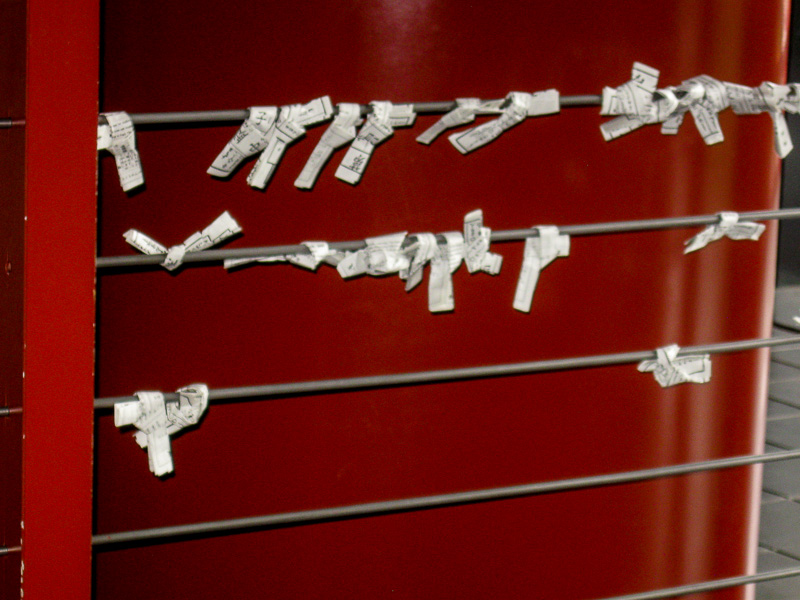
This is another area of prayer sectioned off from the general visiting area by wire mesh.

A distant view of the temple entrance from Nakamise Street lined with vendors.

Yukatas are lightweight Japanese robes which serve as casual wear during the warmer weather and are technically different than Kimonos. This group of girls/women in their Yukatas enjoyed posing for their picture on the temple steps.

An interesting and rather large decorative structure was situated to one side of the temple gate.
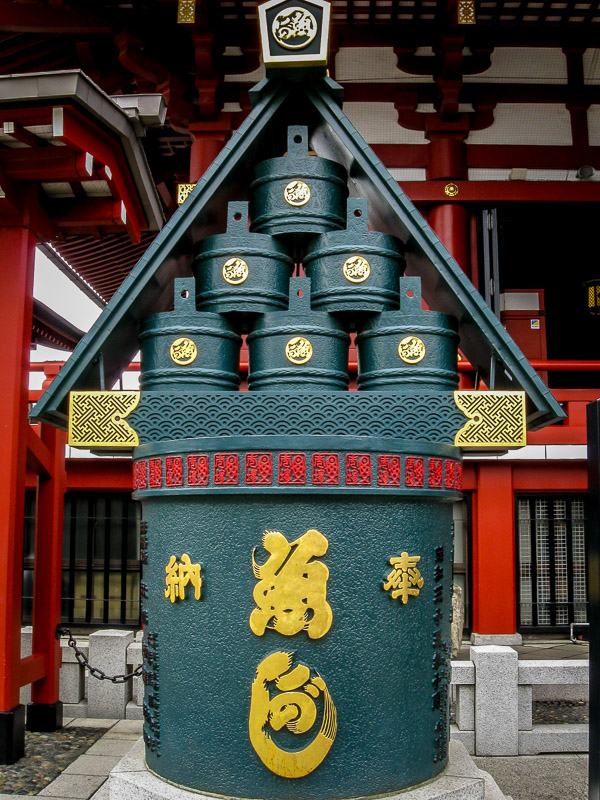
Another lantern outside the temple which wasn’t nearly as large as the previous red example above is created in a different style.
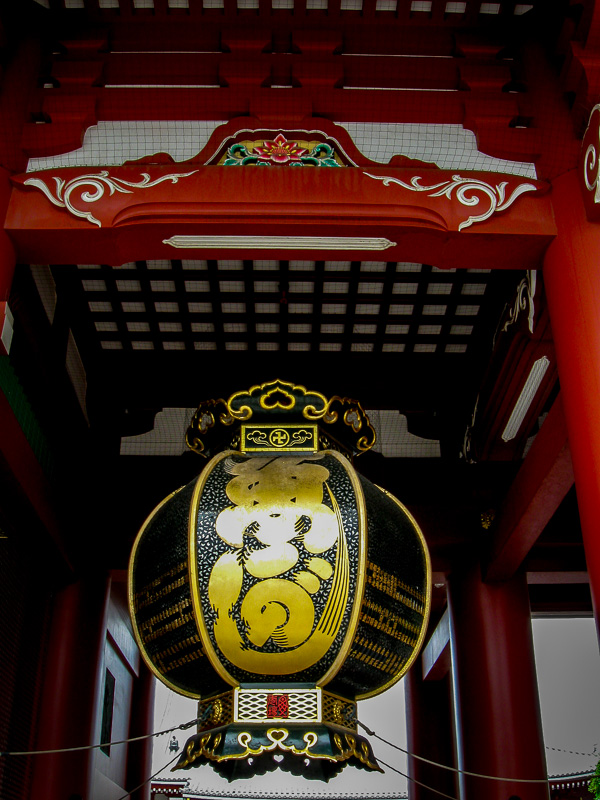
A family out for a fun day at this famous tourist site is wearing Disney shirts.
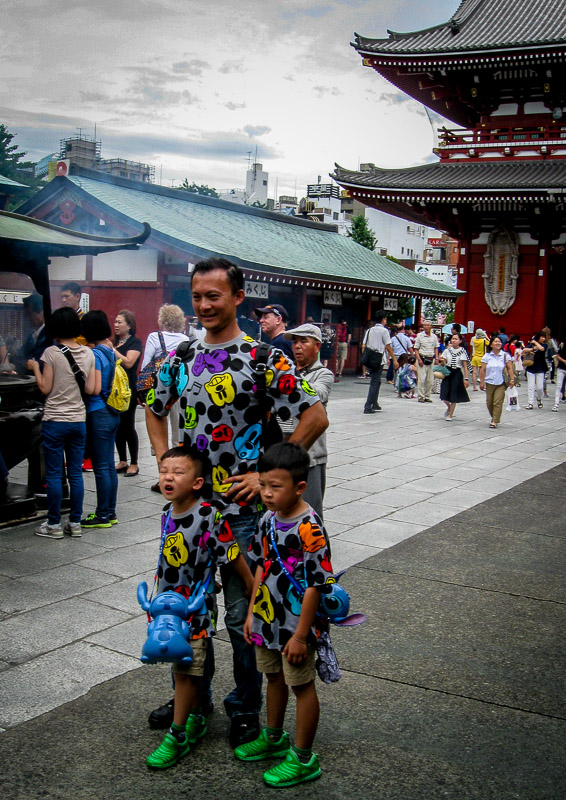
A crowd of tourists strolls along Nakamise Street as this view taken from the temple area shows.
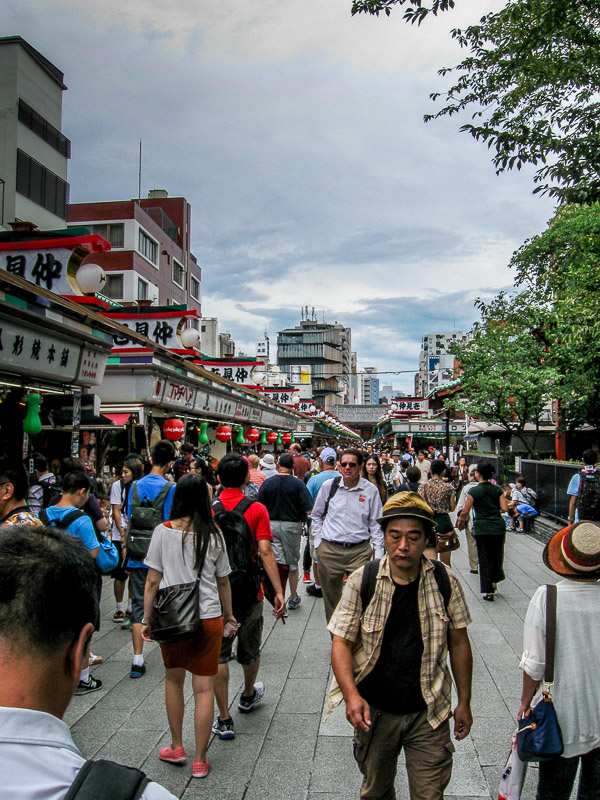
The Tokyo Skytree seems ubiquitous when moving around the city as it crops up from time-to-time.
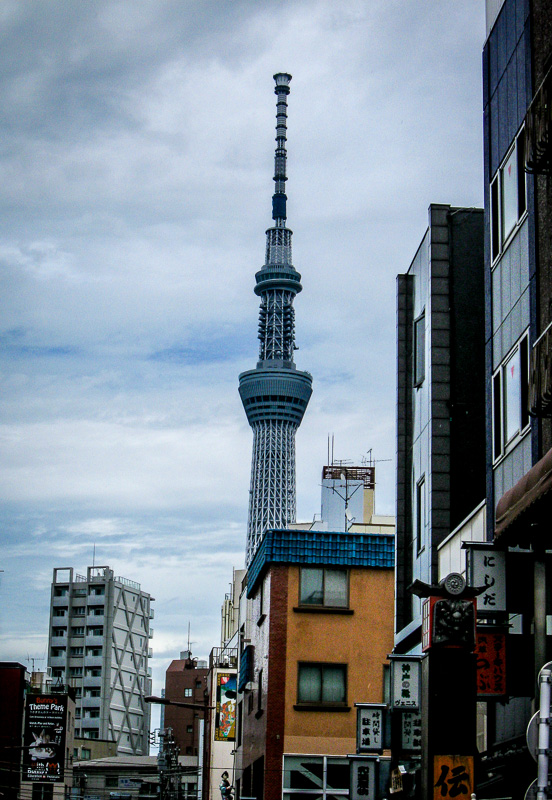
This was a very busy first day in Tokyo and we weren’t quite done!
Tokyo (2015) Day 1 – Meiji Shrine
Tokyo (2015) Day 1 – Imperial Palace East Gardens
JBRish.com originally published this post
Thank you for the mention! Your post is very informative. 🙂 Well done!